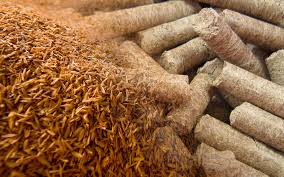30% more industrial units warm up to eco-friendly paddy straw pellets in Punjab
By Vishal Joshi
Encouraged by the organised push by the Centre and the state government to get rid of the environmentally hazardous annual farm practice of burning paddy stubble, this year, Punjab has seen a 30% surge in units that convert crop residue into pellets used by industries for co-firing.
Experts said paddy straw was converted into pellets using the pelletisation process. These can be used at thermal plants for co-firing, a process involving simultaneous combustion of two different types of fuel in the same boiler, often a mix of coal and a renewable fuel, to reduce carbon emissions and manage agricultural waste simultaneously.
The initiative was taken for the first time in 2023 as an ex-situ measure when five such pelletisation units were set up to address the problem of rampant burning of the residue of non-basmati varieties.

In 2024, their number rose to 16 with the annual capacity to process 3.05 lakh tonnes, and this year, 23 such units are operational in 11 districts, whereas another 43 biomass-based factories are coming up in various places, as per Punjab Pollution Control Board (PPCB) data.
Krunesh Garg, who recently retired as the chief environment engineer of PPCB, said an increase in the number of pelletisation units in the last three years indicated that the initiative was being appreciated by entrepreneurs because of a wide market of biomass to be used as fuel.
This year, PPCB has directed coal-based thermal power plants in the state to procure biomass pellets and briquettes produced by entrepreneurs. Efforts are also being made to promote the utilisation of paddy stubble in brick kilns and various other industries.
“As the number of the factories has improved to 23 this time, these units can process 4.65 lakh tonnes. With 43 more units in the pipeline, the capacity of these new plants would be 11.71 lakh tonnes,” said an official requesting anonymity.
On average, Punjab produces about 19 million tonnes of paddy residue in each kharif season.
Centre offering 40% financial grant
Authorities attribute a surge in the biomass process units to the economic incentive by the Centre, under which an entrepreneur gets a 40% financial grant. PPCB experts, too, pushed an entrepreneurial ecosystem by finding a market to consume the pellets, said another official of the board.
Data shows that Mansa is leading with six operational factories and another eight units are in the pipeline.
Officials that entrepreneurs were preferring the underdeveloped district of Mansa due to the presence of a private power generation plant in the district and another public sector power plant at Lehra Mohabbat in Bathinda.
There are four units in Moga, three in Patiala and two each in Amritsar and Bathinda. Official data says that Pathankot, where farmers sow more basmati rice, has no existing or proposed unit.
After eight upcoming units in Mansa, districts of Sangrur, Gurdaspur, Ludhiana and Jalandhar will soon have four pelletisation factories each.
This article has been republished from The Hindustan Times.

